Key takeaways
- Visual timers provide a clear representation of time, helping children transition between activities with less anxiety and resistance.
- Involving children in setting the timer fosters independence and ownership of their routines, making time management a collaborative effort.
- Consistency in using timers for specific activities enhances their effectiveness, turning them into trusted tools in daily routines.
- Celebrating small successes when children respect the timer’s signal encourages positive attitudes and motivation toward following schedules.

Understanding Visual Timers in Parenting
Visual timers are more than just clocks; they provide a clear, visual representation of time passing, which can be a game-changer for kids who struggle with abstract concepts of waiting or transitions. I remember when my own child found it hard to move from playtime to homework—using a visual timer helped create a sense of predictability and calmness that words alone couldn’t achieve. Have you ever noticed how children often respond better to what they can see rather than what they are told? That’s exactly the power a visual timer holds in a parenting toolkit.
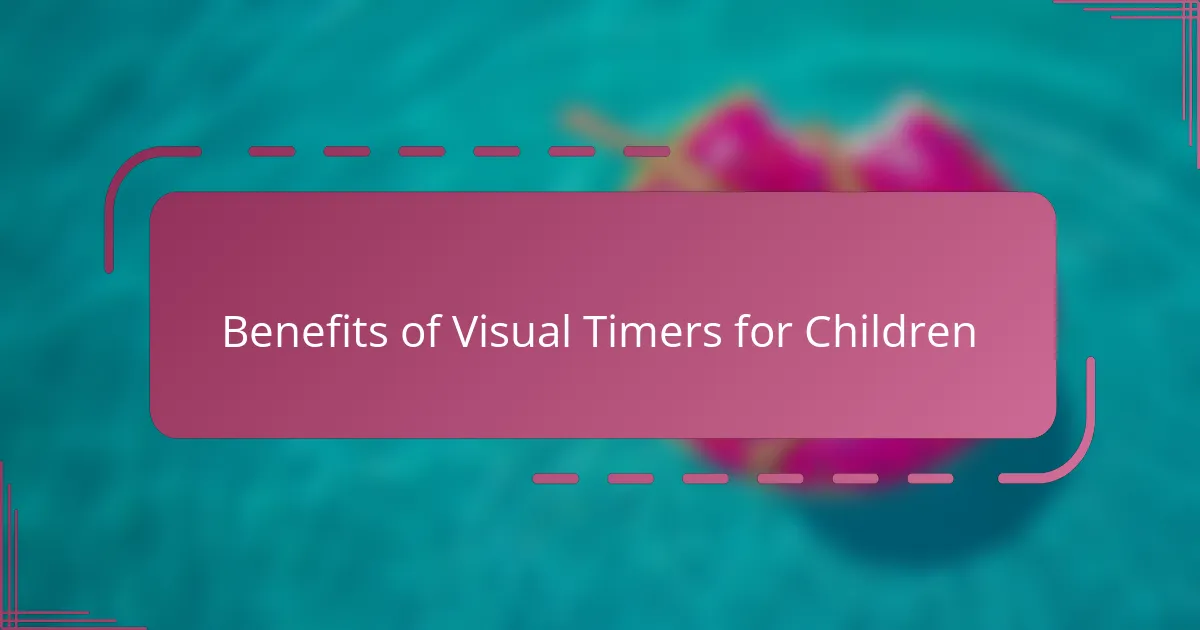
Benefits of Visual Timers for Children
One of the biggest benefits I’ve seen with visual timers is how they help children develop a better sense of time without feeling overwhelmed. When my child uses the Time Timer, the disappearing red disk makes it so clear how much time is left, which reduces anxiety and arguments about “how much longer?” Isn’t it amazing how something so simple can turn moments of frustration into cooperation?
I also love how visual timers encourage independence. Instead of needing constant reminders, kids start managing their own transitions because they can “see” when it’s time to shift gears. In my experience, this builds confidence and helps kids take ownership of their daily routines.
Lastly, visual timers make routines more predictable—and that predictability is a huge comfort. When my child knows exactly how long is left for an activity, it creates a sense of safety and control, especially during those tricky moments between fun and responsibility. Have you noticed how kids thrive when they feel in control, even in the smallest way? That’s exactly what these timers offer.
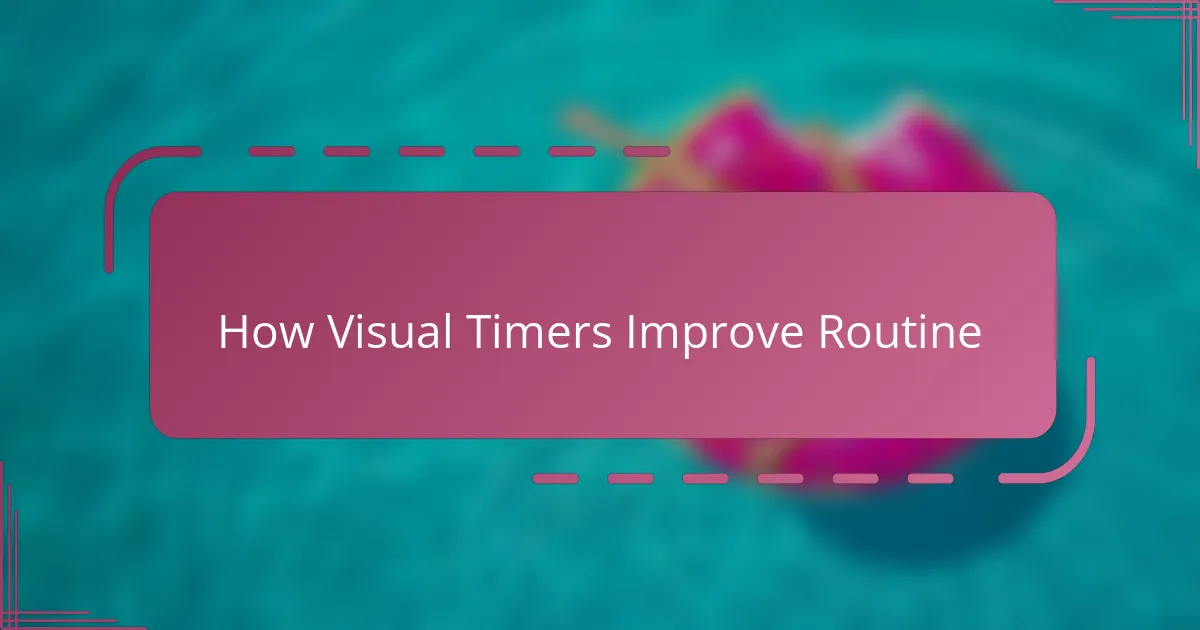
How Visual Timers Improve Routine
Using visual timers has truly improved our daily routine by turning uncertainty into structure. I’ve watched how the clear countdown helps my child understand what’s coming next without the usual resistance. It’s like the timer speaks a language that my child naturally gets—“Only this much time left” becomes much easier to grasp than vague warnings.
Another thing I’ve noticed is how visual timers save us both from constant back-and-forth reminders. Instead of me repeating “Five more minutes” over and over, the timer quietly shows when it’s time to wrap up. This small change has made transitions smoother and less stressful for everyone involved.
Isn’t it incredible how just seeing time pass can ease tension and bring calm to a chaotic morning? In those moments when patience runs thin, our visual timer acts like a trusted guide—helping my child stay focused and me stay patient. It’s a simple tool, but it makes a big difference in keeping our routine steady.
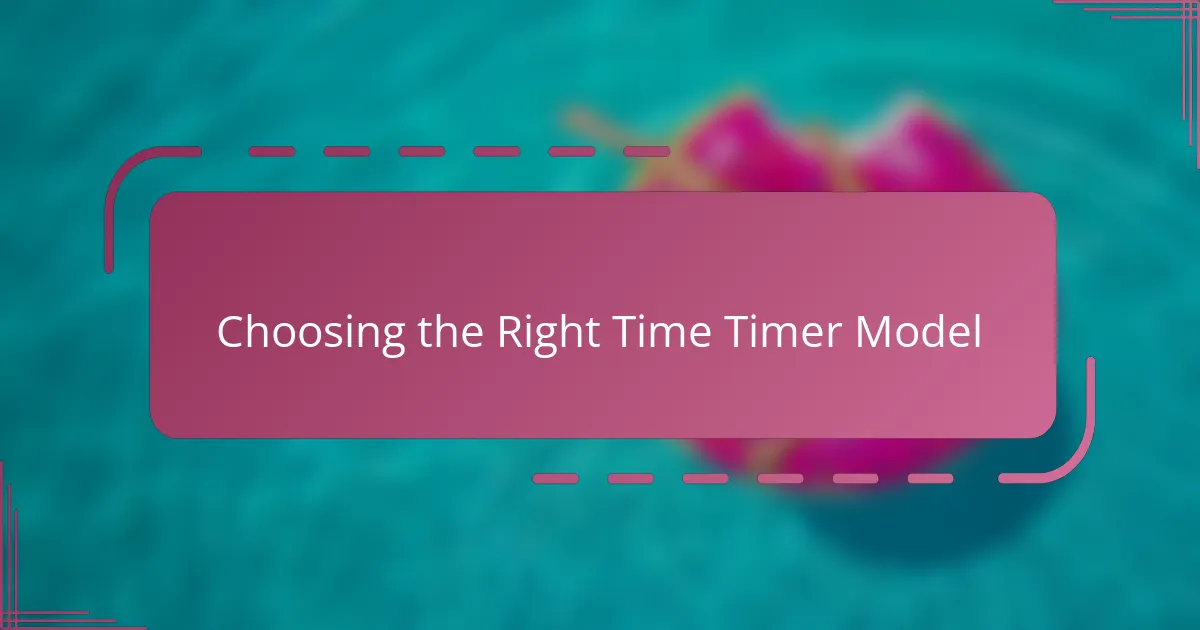
Choosing the Right Time Timer Model
Choosing the right Time Timer model really depends on your child’s age and the specific needs you’re trying to address. For younger kids, I found the bigger timers with larger, more visible disks work best because they can see the time slipping away even from across the room. Have you ever noticed how a small, fiddly timer just doesn’t hold a toddler’s attention?
On the other hand, for older children who are starting to manage more complex schedules, a timer with adjustable time settings and a quieter alarm can be a game-changer. I remember switching to the Time Timer Plus for my elementary schooler—it felt more like a serious tool, which helped him take responsibility without feeling like it was just a toy.
You might also want to consider portability if your routines happen in different spaces. When we began traveling more often, having a compact, battery-operated model made the difference between bringing the timer everywhere or leaving it behind. Isn’t it comforting to know your child has that gentle visual guide, no matter where you are?
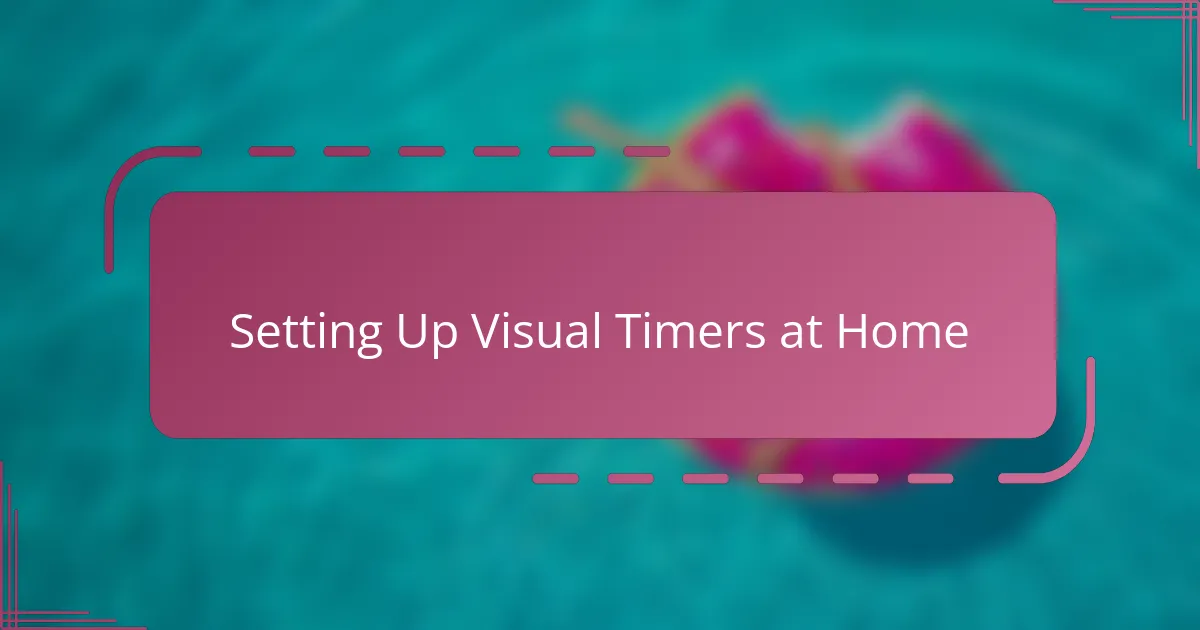
Setting Up Visual Timers at Home
Setting up a visual timer at home is surprisingly straightforward, yet it requires a bit of thought to make it truly effective for your child. I started by placing the timer where my child could easily see it, usually on the kitchen table during homework or near the play area. Have you ever tried hiding a timer only to realize it defeats the purpose? Making it visible not only grabs attention but also reinforces its role as a gentle timekeeper throughout the day.
I also took time to explain how the timer works before using it regularly. When my child saw the red disk slowly disappearing, they began to connect the visual cue with the passing time, which seemed to ease their worries about transitions. Isn’t it amazing how a little demonstration can turn a new tool into a trusted routine? This simple step helped us avoid frustration and confusion right from the start.
Lastly, I recommend involving your child in setting the timer for activities—it gives them a sense of control and responsibility. We made it a habit to choose the timer length together, which turned time management into a collaborative effort rather than a parental demand. Have you noticed how kids respond better when they feel part of the process? This small change has made our daily routines smoother and more cooperative.

My Experience Using Time Timer
Using the Time Timer has been a surprisingly eye-opening experience for me. At first, I wasn’t sure if a simple visual cue could really help with my child’s impatience, but watching that bright red disk slowly disappear created moments of calm I hadn’t expected. Have you ever seen a child’s whole demeanor change just by seeing time ticking away? That was exactly what happened in our home.
What struck me most was how the timer took the pressure off both of us. Instead of me feeling like the “time police,” the timer gently guided my child through transitions, making those tricky moments feel less like battles and more like natural shifts. It felt like we found a silent but powerful ally in managing daily routines.
I also appreciated how the Time Timer encouraged my child’s independence over time. Watching my little one confidently set the timer and keep track of their own time made me realize just how much control a simple visual tool can give a child. Have you noticed how kids start to feel proud when they can manage things on their own? That small sense of achievement made a big difference in our daily flow.
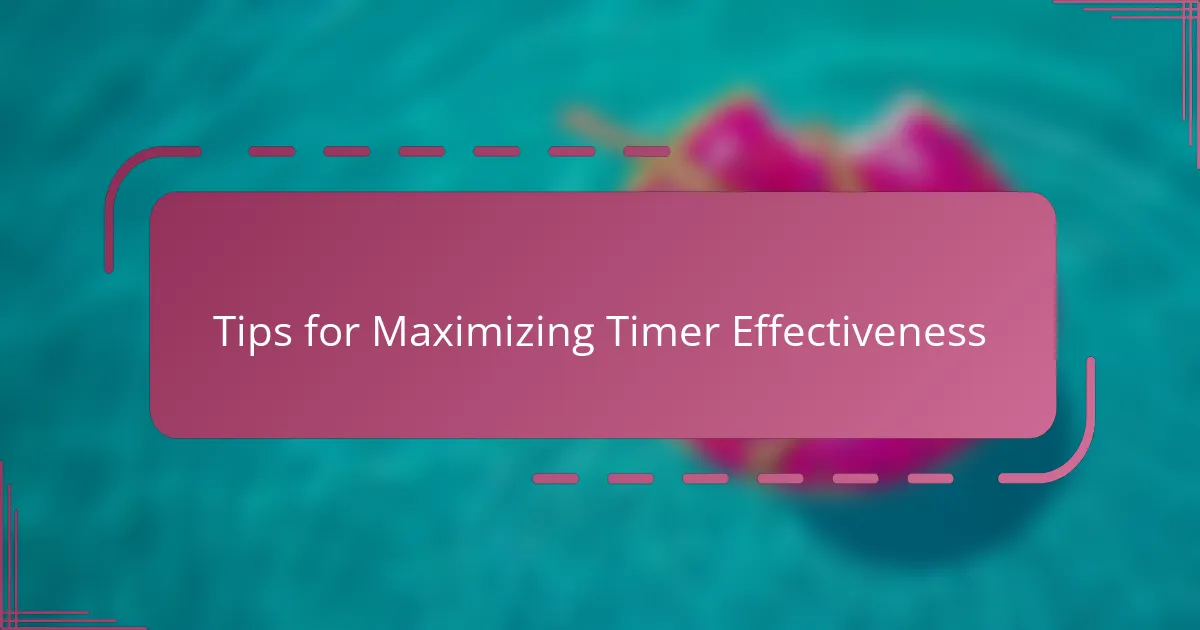
Tips for Maximizing Timer Effectiveness
One tip I’ve learned is to keep the timer visible but not distracting. Placing it where your child can easily glance at it without it becoming a constant fixation strikes the right balance. Have you ever tried making the timer too prominent, only to find your child fixates on it instead of the task? Finding that sweet spot really helps the timer do its job without creating new distractions.
Consistency also matters a lot. We made a habit of using the timer for similar activities at the same time every day, like before homework or during clean-up. This routine gave the timer more meaning and helped my child anticipate what was coming next. Isn’t it interesting how repetition can turn an unfamiliar tool into a predictable and trusted part of the day?
Finally, I found that celebrating small successes when the timer was used well boosted motivation. Praising my child when they respected the timer’s signal made a huge difference—turning what could be a chore into a kind of game. Have you noticed how positive reinforcement can transform a child’s attitude toward following new rules? That little boost of encouragement kept the timer from feeling like just another demand.


